 |
ChessBase Reviews |
Last updated 11 March 2001

| index |
CDs, DVDs, Software Part 3
There have been a lot of new ChessBase products since my last review in Magazine 70. The flagship of those has to have been the release of ChessBase 8, which was released just too late for inclusion in the last issue.
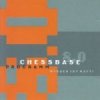
I have spoken to a few people who bought CB8 and all seem to be impressed with the improvements. When I first got
my hands on it I was a bit dubious. It looked great but I had some slight difficulty in working out how to do things.
This wasn't really anything to do with CB8 but was simply because I was so used to using CB7. All new products take a
bit of getting used to, and although I would still be happy to use CB7 I much prefer CB8.
This article is much too short to cover all the improvements but you will be able to get greater detail at our website. So what are some of the things I like? Well the first has to be the improved internet functionality. I can have a game opened at a particular position and CB8 will do a search online, at the ChessBase site, to find games that have reached that position. Now, if I want to send a friend a copy of a game, I simply right click on that game in the games list and select the option Output and then Email. My Email software is automatically launched with a file attachment of the game already there. I type in my message, select who I'm sending it to, and simply send. Now if everyone will please buy CB8 they can send me games for the Games Column by E-mail and I can open them with CB8 straightaway, rather than have to input them move-by-move!
The front-end interface has been changed along the lines of how Fritz 6 looks. You can even change the position of the board and other panes to set it up to your own preferences. Panes are resizable as well. A new addition is the inclusion of a mini board beside the analysis engine window to allow you to play through the currently calculated best line. The main game board can also be changed to a 3D display for those who don't like looking at diagrams.
Of course you will be saying that all this is fine, but it's a database program, so how good is it do at doing its job? Well for one thing it is much easier to use since the front end has been totally redesigned in a Windows format. You can have multiple windows open at the same time. That means you can open more than one game at a time and they appear in different windows, which you can switch between by selecting the appropriate window from the task bar.
The speed of the search facility also seems to have been greatly improved which is a major plus when you are dealing with 1 million plus databases like me. In fact CB8 uses a TurboCache to store the reference Database on the first search. This means that second or subsequent searches in that database are even faster. ChessBase have also improved the double check (duplicate games) and integrity checks so it is even easier to maintain your databases and keep them error free. This is a must if you are downloading games from the Internet to build your own databases.
All in all CB8 is very impressive and it is a lot cheaper than CB7 was when it first came out. At around about £100 it is well within the reach of a lot of players.
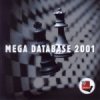
So what else is new from ChessBase? Well Bigbase 2001 and Megabase 2001 are both available for those who are looking
for top quality databases. Megabase now has 1.7 Million games and 40,000 of those contain commentary from top players.
The following CDs are stand alone products so you don't have to own ChessBase to get the full benefit from them.

Specialist opening CD's include the Classical Sicilian (1.e4 c5 2.Nf3 d6 3.d4 cxd4 4.Nxd4 Nf6 5.Nc3 Nc6) by Anthony
Kosten. The English GM has done a remarkable job in keeping this training CD simple, and this greatly benefits the student
who uses it. The database only uses 913 sample games but these are linked from 27 detailed texts to guide you through the
ideas involved. There are also 25 test games with training questions to check how well you're doing and a 8000 game database
of games should you want to see how the opening has been played in practice.
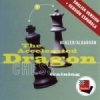
The Accelerated Dragon (1.e4 c5 2.Nf3 Nc6 3.d4 cxd4 4.Nxd4 g6) by Claudio Minzer and Gustavo Albarran. This training CD
takes a slightly different approach and is divided into three parts. The first as you would expect deal with the opening
theory and is split into 15 parts containing the relevant games. Part two deals with the middlegame and concentrates on the
strategic ideas of the opening. Part three contains 20 games and training questions. Once again there are over 8000 games
in the database.

The Basic Principles of Chess Strategy Vol. III by Professor Alexey Bartashnikov completes what has been a first class set
of CDs from this author. Basically he uses 74 extensively annotated games to take the student from the middlegame to the
endgame. Such things as how to exchange correctly, positional sacrifices, manoeuvring in equal positions and fighting for the
initiative are taught before moving onto the endgame phase where the roles of the pawns and the importance of King activity in
the endgame. If you manage all that, or even if you don't, you can enjoy testing yourself against the clock in ten test games.
On the chess playing program side of things Deep Fritz and Nimzo 8 are both now available and either one is going to prove extremely challenging for even strong players.
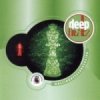
Deep Fritz runs very happily on your standard PC but is capable of using up to 8 processors. For example it runs about 80%
faster on a dual processor machine. The program is based on the one which beat Gary Kasparov so it should give us lesser mortals
a run for our money. This engine can be used from within ChessBase or as a stand alone program. The engine has been improved
compared to Fritz 6 to give it better positional understanding and better endgame knowledge. Its opening book has also been
revised and extended.
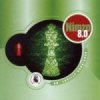
The playing strength of Nimzo 8 has been improved by about 50 Elo points compared to the previous version. Once again this
engine can be used from within ChessBase or as a stand alone program. Nimzo has the advantage that it keeps its tablebases in
memory for search access at all times. This is a good thing since it speeds up things compared to engines which constantly
have to access the CD. The opening book has also been extended to include the latest theory. ChessBase indicate that Nimzo is
actually stronger than Fritz at blitz time controls. Nimzo also seemed to be happier in closed positions compared to other
programs. Nimzo has an interesting feature which I haven't tried in that you can opt to play blindfold chess against it.
Personally I have problems remembering where the pieces are even when I can see the board, but I am sure there a lot of chess
enthusiasts who will love this feature.